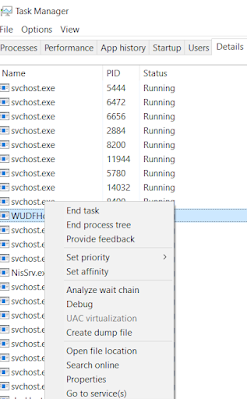🧩 How to Build a Budget-Friendly Microservice in .NET 8 with Minimal Boilerplate
The good news? With .NET 8, building a lightweight, budget-friendly microservice has never been simpler. Let’s walk through how you can build one with minimal boilerplate, without losing the essentials.
Recommended Watch : Minimal Web API
Why Budget-Friendly Microservices Matter
Before we dive into code, let’s talk about the why.
Microservices promise scalability, modularity, and independent deployments — but they can also become a maintenance nightmare if you over-engineer them.
The trick is to start simple, then add complexity only when necessary. This not only saves development effort but also reduces hosting and maintenance costs — perfect for startups, side projects, or indie developers.
🧱 Step 1: Start with .NET 8 Minimal API
In older .NET versions, setting up a microservice meant juggling controllers, Startup classes, and dozens of configuration files.
In .NET 8, you can spin up a working REST microservice in under 10 lines of code using Minimal APIs.
Here’s a simple example:
var builder = WebApplication.CreateBuilder(args);
var app = builder.Build();
app.MapGet("/api/hello", () => "Hello from your budget-friendly microservice!");
app.Run();
Run this, and you’ve got a working endpoint. That’s your hello world microservice, minus the fluff.
Notice there’s no Startup.cs, no explicit controllers, no extra dependencies — yet it’s fully functional.
⚙️ Step 2: Add Dependency Injection Without Overhead
Even though it’s minimal, we’ll still need services for business logic. Keep it clean and modular:
public interface IWeatherService
{
string GetForecast();
}
public class WeatherService : IWeatherService
{
public string GetForecast() => "Sunny with a chance of cost savings!";
}
Register it simply:
builder.Services.AddScoped<IWeatherService, WeatherService>();
And use it in your endpoint:
app.MapGet("/api/weather", (IWeatherService svc) => svc.GetForecast());
This pattern scales nicely without the ceremony of large controllers.
🧩 Step 3: Keep Configuration Simple
You don’t need a mountain of config files. .NET 8 supports strongly typed configuration directly from appsettings.json or environment variables.
Example:
{
"AppSettings": {
"ServiceName": "WeatherMicroservice"
}
}
Then bind and use it:
builder.Services.Configure<AppSettings>(
builder.Configuration.GetSection("AppSettings"));
public record AppSettings(string ServiceName);
Inject via the constructor or endpoint parameter. It’s clean and minimal — no need for config factories or custom readers.
🪶 Step 4: Logging and Health Checks the Lightweight Way
Logging and health checks are often bloated in microservices.
Here’s how to keep them lean:
builder.Services.AddHealthChecks();
var app = builder.Build();
app.MapHealthChecks("/health");
app.MapGet("/", () => "Service is running!");
app.Run();
For logging, use the built-in logger — it’s already fast and structured:
app.MapGet("/logtest", (ILoggerFactory loggerFactory) =>
{
var logger = loggerFactory.CreateLogger("DemoLogger");
logger.LogInformation("Log test successful!");
return "Check your logs!";
});
No need for Serilog or heavy logging frameworks unless you truly need them later.
🪶 Step 5: Use SQLite or LiteDB for Local Prototypes
You don’t always need SQL Server or PostgreSQL.
For quick prototypes or low-traffic apps, lightweight databases like SQLite or LiteDB save money and deployment complexity.
Here’s a sample with SQLite using Entity Framework Core:
builder.Services.AddDbContext<AppDbContext>(opt =>
opt.UseSqlite("Data Source=app.db"));
Run dotnet ef database update once, and you’re done.
SQLite keeps your service self-contained — perfect for small deployments on minimal infrastructure.
☁️ Step 6: Host Smart, Not Expensive
For a “budget-friendly” microservice, think hosting efficiency:
-
🧭 Use containerization — a single small Docker image can host many microservices.
-
☁️ Host on Azure Container Apps or AWS Fargate for on-demand scaling (pay only when used).
-
🧩 Combine multiple micro-endpoints into one service initially — split them out later if truly needed.
-
🧠 Use GitHub Actions for free CI/CD in small projects.
All these optimizations mean you can run production-ready microservices for a few dollars per month.
🧰 Bonus: Reusable Template
Once you’ve built one microservice, extract the essentials into a reusable project template:
dotnet new webapi -n MyServiceTemplate --minimal
Then customize:
-
Common middleware
-
Basic health check
-
Logging setup
-
Example endpoints
Now you can bootstrap new services in minutes instead of hours.
💡 Final Thoughts
Building microservices doesn’t have to be expensive or over-engineered. With .NET 8 Minimal APIs, you can start small, scale naturally, and keep the boilerplate to an absolute minimum.
So next time you’re tempted to spin up a full-blown enterprise microservice, try asking:
“Can this be done with 20 lines of clean .NET 8 code first?”
Chances are — yes, it can.
And your wallet (and future self) will thank you later.
✅ Key Takeaways
-
Use .NET 8 Minimal APIs for a lean start.
-
Add DI, config, and logging only as needed.
-
Prototype with SQLite or LiteDB to save cost.
-
Deploy smart — containerize and pay-per-use.
-
Reuse templates to accelerate new microservices.

Comments
Post a Comment